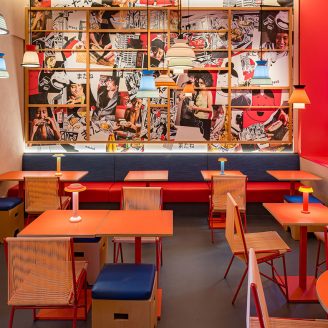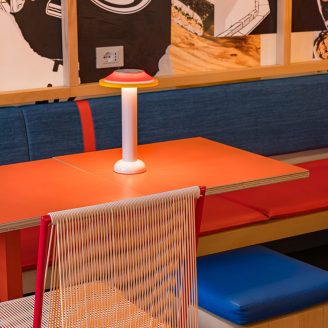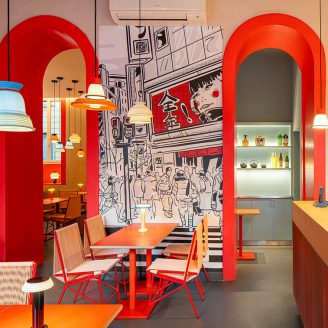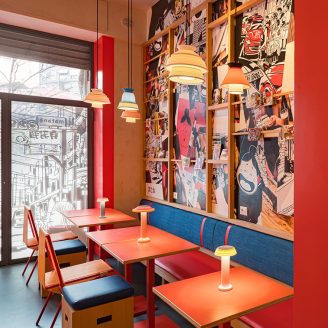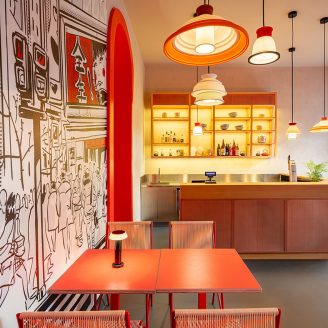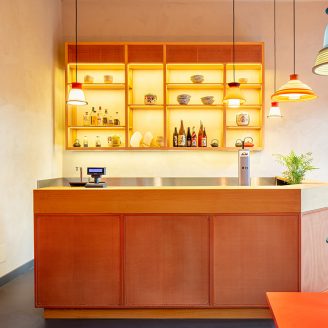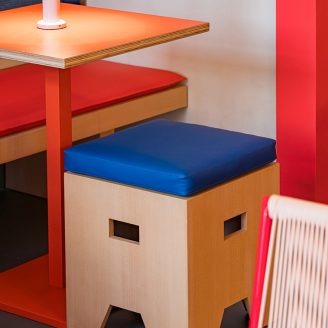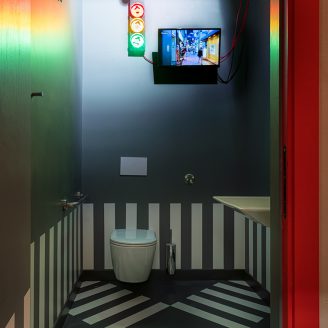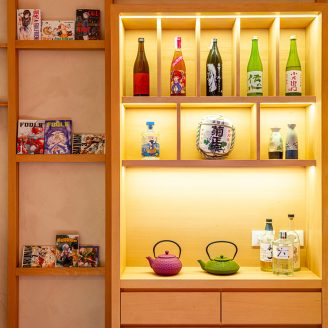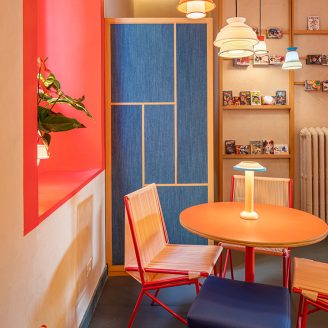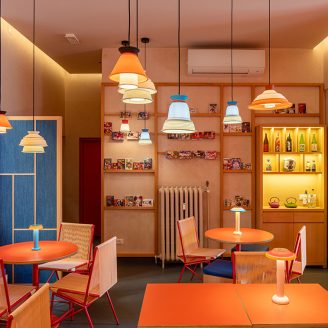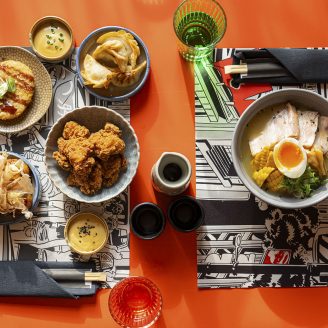Matanē is the name of the new Japanese street food restaurant recently inaugurated in Piazza Wagner, Milan, with a concept and style clearly inspired by pop. This is the second space opened by the brand after the first Matanē in Porta Garibaldi, which originally was the only restaurant in town to offer onigirazu, a rice sandwich featuring layers of rice filled with various ingredients, all wrapped in nori seaweed, born in the 80s from the manga culture.
The interior design of the restaurant was handled by Vudafieri-Saverino Partners and includes 42 seats on a surface of 78 square metres divided into two rooms, plus a small outdoor area that can be used when the weather is fine.
The atmospheres of Tokyo and the elements typical of the Japanese culture are clearly at the heart of the concept: they can be found in the colour overlays of the wallpapers and in the silicone multicolour table and ceiling lamps by Sowden. Also, the light wall-mounted bookcases designed by the architects evoke the Japanese tradition: they reinterpret fusuma e shoji, panels and sliding doors that divide the spaces in the traditional Japanese houses.
Colour defines the space and guides all the choices concerning interior design, from lighting to furniture to the graphics on the walls. Red – the sacred colour par excellence, used in Japanese architecture to represent deities and decorate Shinto temples – is used in different shades for tables, seats, benches, and upholstered furniture. Jeans, a fabric with an excellent production in Japan, is employed here for cushions and dividers to add an even more pop touch. At the entrance, the wooden counter with copper mesh panels and the wall-mounted bottle rack, both designed by Vudafieri-Saverino Partners, take centre stage.
Finally, the urban character can also be found in the toilet, where the atmosphere of the streets of Tokyo is reproduced through white striped decorations evoking pedestrian crossings, a traffic light and images projected on a loop by a screen, on the edge between Italy and Japan.


